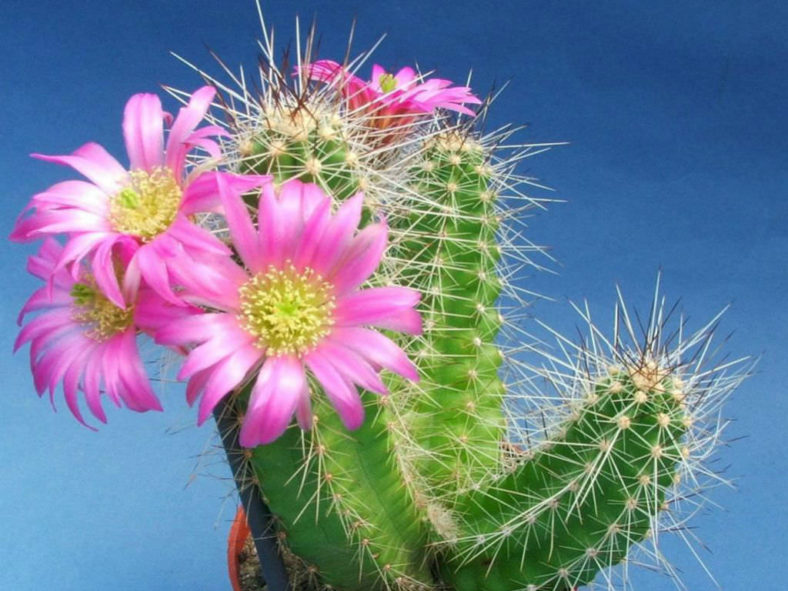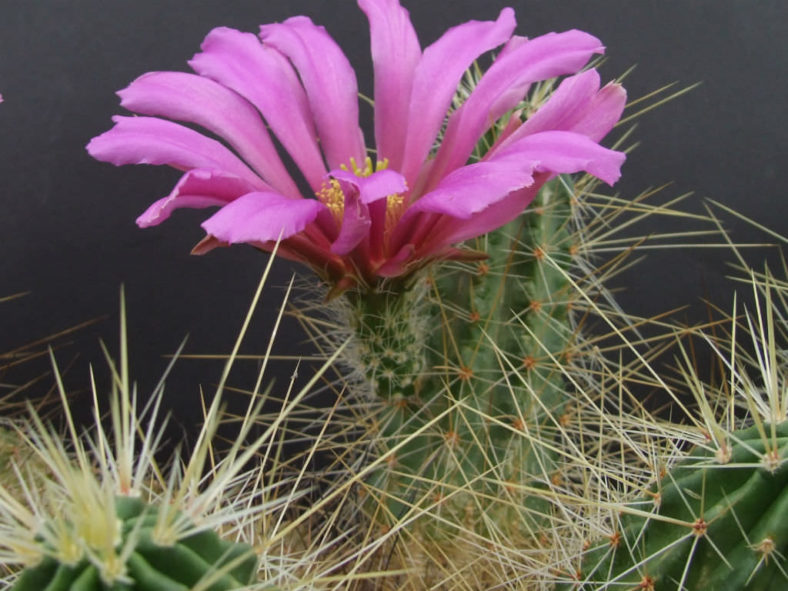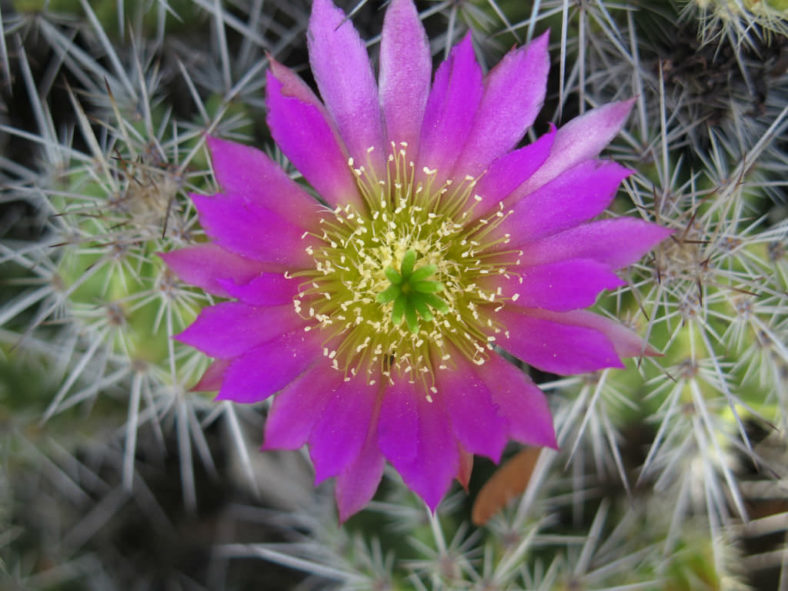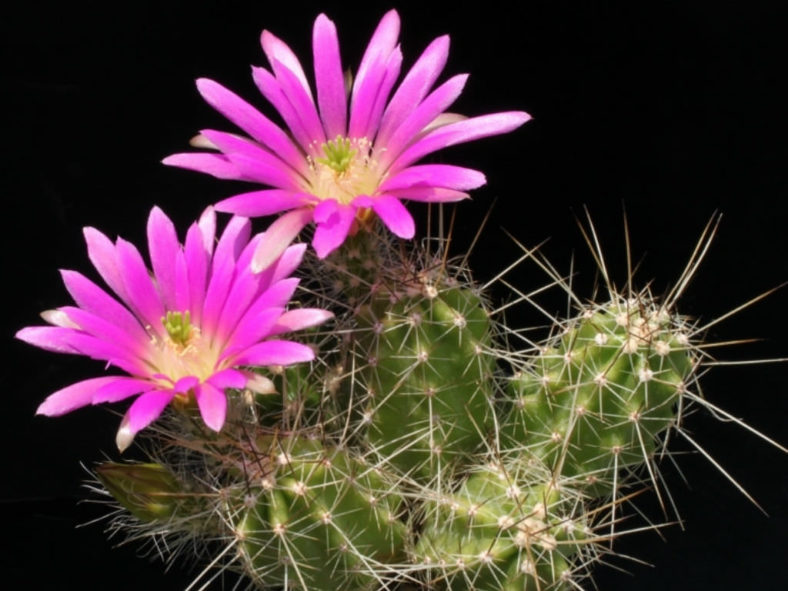Scientific Name
Echinocereus parkeri N.P.Taylor
Synonym(s)
Echinocereus parkeri subsp. parkeri
Scientific Classification
Family: Cactaceae
Subfamily: Cactoideae
Tribe: Pachycereeae
Genus: Echinocereus
Origin
Echinocereus parkeri is native to Mexico.
Description
Echinocereus parkeri is a small cactus that produces many stems, forming a compact mound or loose clump. The stems are tapering or cylindrical, have 6 to 10 tuberculate ribs, and can grow up to 6 inches (15 cm) tall and 2.4 inches (6 cm) in diameter. Each areole bears 1 to 8 central and 6 to 18 radial spines. The central spines are dark, becoming glassy white to yellowish with age, and can measure up to 2.8 inches (6.5 cm) long, while the radial spines are usually glassy white and can measure up to 0.5 inches (1.3 cm) long.
The flowers are funnel-shaped and range in color from magenta to deep pink with white throats. They appear in late spring and summer and can reach up to 2.2 inches (5.5 cm) in length and 2.4 inches (6 cm) in diameter.

Hardiness
USDA hardiness zones 9b to 11b: from 25 °F (−3.9 °C) to 50 °F (+10 °C).
How to Grow and Care
If you can grow other globular cacti successfully, you can most likely grow Echinocereus well. One of the key success factors is avoiding any hint of wet soil. Because their root systems are weak, they are especially prone to root rot, eventually killing your plant. Otherwise, they thrive on a program of intense, bright light, little water, and a steady diet of light fertilizer. These cacti are vulnerable to mealybugs and aphids.
Echinocereus are slow-growing cacti that should only need repotting every other year or so. You can prolong repotting by removing plantlets and potting them in their pots. When repotting a cactus, remove it from its pot and remove any clumped soil. These plants tend to be shallow-rooted with weak root systems, so take care not to damage their roots.
Learn more at How to Grow and Care for Echinocereus.
Links
- Back to genus Echinocereus
- Succupedia: Browse succulents by Scientific Name, Common Name, Genus, Family, USDA Hardiness Zone, Origin, or cacti by Genus
Photo Gallery
Click on a photo to see a larger version.


